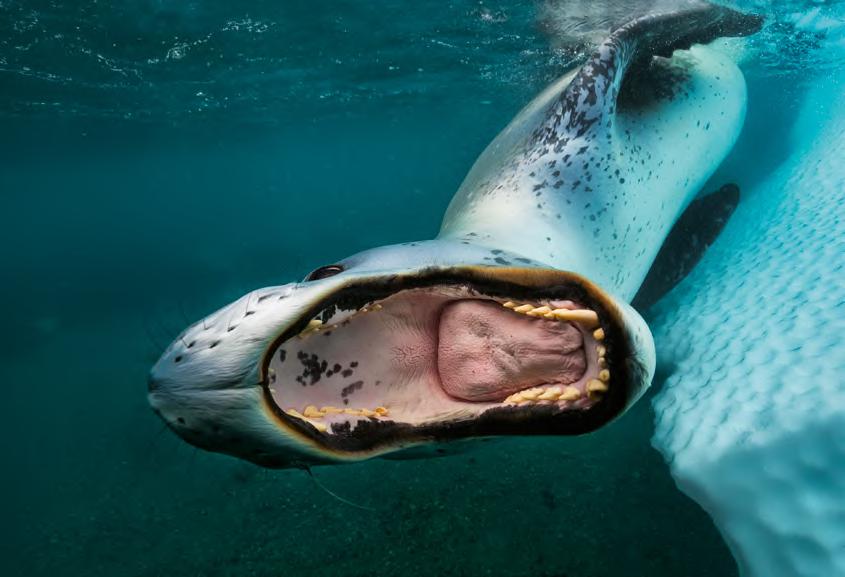
3 minute read
AMG4Women Experience
ROADS . DANGEROUS
A trip along the most remote Alpine passes and gravel roads of Piedmont and Savoy with the Mercedes-AMG G 63.
Mercedes-AMG G 63: Fuel consumption urban/extra-urban/combined: 16,5/11,1/13,1 l/100 km combined CO₂ emissions: 299 g/km; Efficiency Class F. *For more information on the measurement-procedure and the DAT-guide, please see page 5. Text & Photography | Michael von Hassel
Seneca said, “It is not because things are difficult that we do not dare; it is because we do not dare that they are difficult.” In recent years, I have begun to undertake uncomfortable journeys to the world’s unwelcoming locations. In the process, I have discovered that if I am friendly, people are friendly to me. If I provide help when it is needed, I receive help too. A change of perspective never hurts. Talking to each other resolves every problem.
I find places suffused with history exciting—especially ones that are not far away yet are forgotten. With the new Mercedes-AMG G 63, I wanted to take on a journey along the craggy mountain passes of Piedmont and Savoy. The mountains there appear endlessly high and hugely impressive and have witnessed many changes. This cultural landscape has been inhabited for millennia and was always disputed. Fortresses, ruins, old roads, and fortifications are like an open book. Borders have been moved again and again. They were ruled by one group and then by another. The central passages over the Alps have been conquered, fortified, and destroyed—but also overcome with once-in-a-century constructions.
LAC DE ROTEREL AND COL DU MONT CENIS I 2,081 M (6,827 FT)
Our journey begins at the Mont Cenis Tunnel. But rather than use the tunnel, we take a dirt track from Bar Cenisio up to the idyllic Lac de Roterel. Emperor Constantine the Great passed by here in the year 312, and—later—so did Charles the Great and Henry IV on his way to Canossa. The first road was built by Napoleon. The remains of that route are difficult, but impressively beautiful. The view is fantastic, and we picked masses of raspberries. It’s a paradise for adventurers!
At the top, we reach a high plateau. The Italians constructed the enormous Varisello fortress here in 1877—a superhuman feat. But it was already abandoned in 1910. The walls could no longer withstand modern weaponry. Today, the fortress belongs to France.
We continue on wild gravel roads to Lac du Mont Cenis. The Italians built the reservoir in the 1920s. I sit on the dam wall and think about the generations of men who built it. Nowadays, people drive through the tunnel in the valley below without taking notice. We cross the Col du Mont Cenis and drive down to Lanslebourg: a pleasant skiing location but deserted in summer—making it the best time for a visit!
The pulse beats faster; the senses are heightened
FORT DE LA TURRA I 2,529 M (8,297 FT)
The next morning, after two strong coffees, we take the forest road that leads us to Fort de la Turra. The road is even wilder than yesterday’s. But the G 63 still has no problems. We are impressed by its perfection and sheer power.
The fort is a huge site that shows the irony of fate in many ways. The French built it in 1889 as a reaction to the Italian fortifications. In World War II, the Italians then attacked from Piedmont. The fort was able to withstand the attack. But the Italians broke through at another point and occupied the region behind the fort. After World War II, they had to return the conquered land to France.
Near the tranquil commune of Modane is the Fréjus Rail Tunnel, built in 1871 and the oldest major tunnel in the Alps. Quite incredibly some of the fortresses in the region were built more recently and yet are in ruins. This connecting construction, on the other hand, has survived two world wars.
COL DE SOMMEILLER I 2,996 M (9,829 FT)
After a night in Bardonecchia, we are going for a record. Our aim is the Col de Sommeiller—the highest drivable point in the Alps at 2,996 m (9,829 ft).
The road up, past Rifugio Scarfiotti, is a truly dangerous road: coarse gravel, dust, slippery scree, narrow and winding turns, and steep inclines. On one side, there are dangerous cliffs; on the other, a deep chasm. One false move can mean the end. It’s a feeling that really makes us come alive. The pulse beats faster; the senses are heightened.











